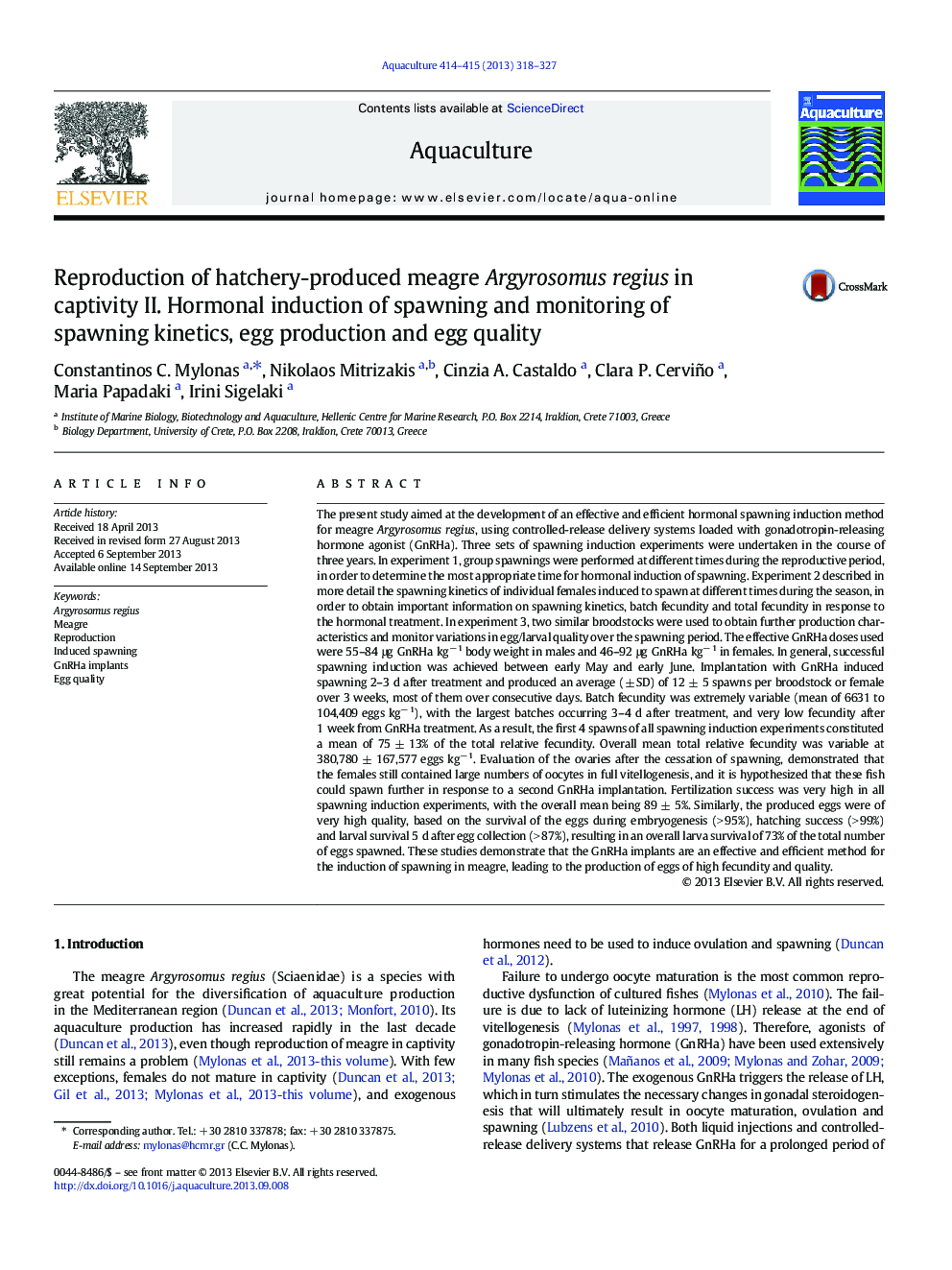| Article ID | Journal | Published Year | Pages | File Type |
|---|---|---|---|---|
| 8495456 | Aquaculture | 2013 | 10 Pages |
Abstract
The present study aimed at the development of an effective and efficient hormonal spawning induction method for meagre Argyrosomus regius, using controlled-release delivery systems loaded with gonadotropin-releasing hormone agonist (GnRHa). Three sets of spawning induction experiments were undertaken in the course of three years. In experiment 1, group spawnings were performed at different times during the reproductive period, in order to determine the most appropriate time for hormonal induction of spawning. Experiment 2 described in more detail the spawning kinetics of individual females induced to spawn at different times during the season, in order to obtain important information on spawning kinetics, batch fecundity and total fecundity in response to the hormonal treatment. In experiment 3, two similar broodstocks were used to obtain further production characteristics and monitor variations in egg/larval quality over the spawning period. The effective GnRHa doses used were 55-84 μg GnRHa kgâ 1 body weight in males and 46-92 μg GnRHa kgâ 1 in females. In general, successful spawning induction was achieved between early May and early June. Implantation with GnRHa induced spawning 2-3 d after treatment and produced an average (± SD) of 12 ± 5 spawns per broodstock or female over 3 weeks, most of them over consecutive days. Batch fecundity was extremely variable (mean of 6631 to 104,409 eggs kgâ 1), with the largest batches occurring 3-4 d after treatment, and very low fecundity after 1 week from GnRHa treatment. As a result, the first 4 spawns of all spawning induction experiments constituted a mean of 75 ± 13% of the total relative fecundity. Overall mean total relative fecundity was variable at 380,780 ± 167,577 eggs kgâ 1. Evaluation of the ovaries after the cessation of spawning, demonstrated that the females still contained large numbers of oocytes in full vitellogenesis, and it is hypothesized that these fish could spawn further in response to a second GnRHa implantation. Fertilization success was very high in all spawning induction experiments, with the overall mean being 89 ± 5%. Similarly, the produced eggs were of very high quality, based on the survival of the eggs during embryogenesis (> 95%), hatching success (> 99%) and larval survival 5 d after egg collection (> 87%), resulting in an overall larva survival of 73% of the total number of eggs spawned. These studies demonstrate that the GnRHa implants are an effective and efficient method for the induction of spawning in meagre, leading to the production of eggs of high fecundity and quality.
Related Topics
Life Sciences
Agricultural and Biological Sciences
Aquatic Science
Authors
Constantinos C. Mylonas, Nikolaos Mitrizakis, Cinzia A. Castaldo, Clara P. Cerviño, Maria Papadaki, Irini Sigelaki,
